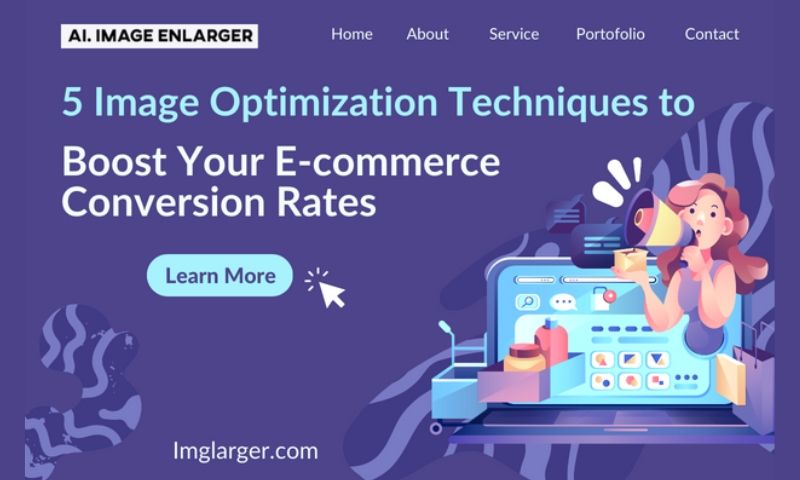Don’t Let Images Kill Your Website

Images are one of the go-to elements for people who wish to enhance their website's interactivity and attractiveness. However, many of them don't consider the possible counter effects which can occur due to poor image selection. According to this Google Developers page, the average web page is 2MB, 2/3 comes from images. The large size can significantly reduce the website's performance where every second matters. That's what makes image optimization so important.

A testimony to this is Google's 2018 research, which uncovered that 53% of mobile users leave a website if it takes longer than three seconds to load. Loading speed is also one of the few factors that directly impact the number of visitors. With people's attention spans constantly on the decline, you'll want to do everything in your power to boost the website's performance fully. There are a couple of ways to do this - fortunately, they're both fairly straightforward.
Image Compression
Generally speaking, image optimization is a compressed image to make the website run faster. As the name suggests, image compression works by fitting all of the picture's pixels into a reduced-size file. The compression method is said to be lossless when no information is lost. In contrast, the compression is lossy if it sacrifices a few pixels to reduce the size. Each of them has its own respective perks - lossless results in better quality and larger size, while lossy is the complete opposite. Now, let's check out a few tools for image compression.
TinyPNG

TinyPNG is a free web-based, lossy compression utility that supports JPEG and PNG image formats. Their algorithms work by selectively removing a number of different colors in images, with a barely noticeable loss in quality. The file size is reduced by over 70%, and the tool has added support for both transparent and animated images. TinyPNG does have certain restrictions tied to its free versions, such as the file size and batch processing limits. Still, for average day-to-day use, it will probably be enough.
ShortPixel

ShortPixel can compress images through three different compression options for a more extensive approach. It also supports three additional formats - GIF, PDF, and WebP. Besides lossy and lossless, ShortPixel offers the so-called "Glossy" variation, which combines the best of both worlds. The tool has more generous limits as far as file size and batch processing are concerned. Unfortunately, the free plan has a restriction of only 100 images per month. If you need more, there are monthly and one-time pricing plans.
Image Enlargement
Another thinking of image optimization is to enlarge it. When people view the website and are interested in the pictures but the image quality is lost when enlarging them, viewers may have a bad viewing experience and even leave the website. A good image enlarger guarantees the quality of the viewer’s experience. A less conventional but arguably more effective method, image enlargement focuses on maximizing the existing images' efficiency. A poor-quality picture can ruin the whole experience, regardless of how good the rest of the website is. By enlarging them, you add value and attract more visitors. Of course, this method is effectiveness will largely depend on how good the tool is. Read on to discover some of the best in the industry.
AI Image Enlarger

Developed with speed, ease of use, and high quality in mind, AI Image Enlarger is one of the most popular utilities for image enlargement. It works from the comfort of your web browser, and you don't have to pay a dime to use it. AI Image Enlarger offers different magnifications to meet different image enlarger requirements. Different from other image enlargers on the market, AI Image Enlarger adopts AI techniques. The machine learning algorithms take advantage of the tool's powerful cloud-based hardware while ensuring zero loss in quality. Alongside the online service, AI Image Enlarger offers an optimized image app for Windows and macOS, Android, and iOS. Furthermore, since the app has batch-processing functionality, you can easily enlarge multiple images from your website at once.
PhotoEnlarger

Similar to the previous tool, PhotoEnlarger is an image enlarger online with fewer features. It has a simple three-step process, which provides results in mere seconds. The user can modify the enlargement percentage, and the tool will run it through four different algorithms. Unfortunately, they're all based on the same principle of enlarging the pixels themselves, resulting in blurry and fuzzy images, which can be highly noticeable.
Conclusion
Although it may not be obvious initially, image optimization has more than one meaning. Image compression speeds up the web page, and image enlarger improves images’ quality to offer a better viewing experience. The enlargement process adds a whole new level of engagement to the visitors, who will be satisfied with a sharp, good-looking, high-quality picture. There are more image enlarger tools with good features. It goes without saying that you should choose only the tried and tested tools, such as the AI-based ones, to get the results you want.



